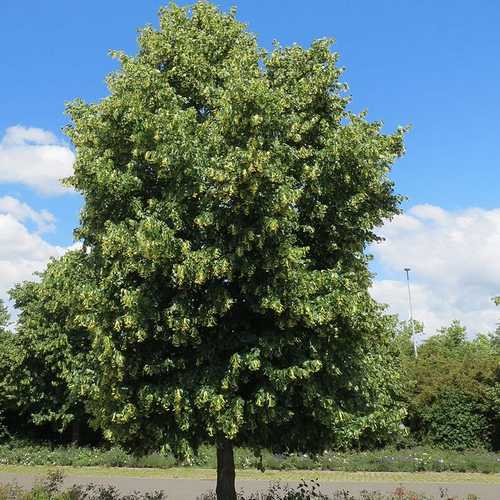UPCOMING EVENTS
Women’s Herbal Wellness Class Series
with Alicia Garza
First two Fridays of the month

January 2nd & 9th
@ 4:00 pm
*** Stick around for Terrie’s Sound Bath afterwards***
*************
Grounded Sound Baths
Fridays January 2nd & 9th
6:00 pm
(Come after Alicia’s Wellness Class)

Connect with Mother Earth as you immerse yourself in the soothing sound of crystal and Tibetan singing bowls and other meditative instruments for a deeply relaxing & healing inward journey. Grounding mats provided.
*************
Return of the Light:
Plant Allies for Stress, Depression, and Fatigue
with Kat Maier

Saturday January 31st, 2026, 10am – 5pm
Heart-Opening Cacao Ceremony

Sunday Morning Tea Ceremonies

with Silvy Franco
Join Silvy for a meditative ceremony to commune with Camelia sinensis. Come for quiet reflection as you sip on several cups of tea following Japanese tradition. Ceremony begins at 9:30 am and goes for an hour. Pre-registration is required.
Suggested Donation: $25




Linden
/in Herb of the Month /by Ashley DavisLinden (Tilia cordata) is the herb of the month. It is a plant that everyone who knows it comes to adore because it’s so lovely, sweet, juicy, fragrant, and relaxing. And it’s good for our hearts, both physically and metaphysically (as you can infer from its heart-shaped leaves and Latin name). With American Heart month and Valentines Day coming up in February, I can’t think of a more appropriate herb to highlight.
COMMON NAME(S): Linden flower, Lime blossom, Basswood, Linn Flowers, Spoonwood, Tilden Flower, Bee tree, Whitewood, Lime tree.
FAMILY: Tiliaceae
DESCRIPTION: a large deciduous tree, growing up to 130 feet tall with a trunk diameter usually of 2 to 3 feet, and a rounded crown. The flowers are intensely sweet and fragrant and beloved by bees. When in bloom, bees forsake most other flowers. The honey that bees make from linden nectar is regarded as some of the best honey in the world.
The leaves are heart-shaped and shiny. The bark is furrowed, and the wood is soft and light in color. It is easily carved and was used historically to make ship’s figureheads, broom handles, beehives and to make parts of instruments.
HISTORY/FOLKLORE:
PARTS USED: Flowers and leaves primarily.
ACTIONS AND PROPERTIES: Nervine, antispasmodic, hypotensive, diaphoretic, diuretic, antioxidant, demulcent, anti-inflammatory, emmenagogue, astringent, nutritive
CONSTITUENTS: volatile oils, flavonoids (antioxidants) including quercetin, coumarin, mucilage, minerals, tannins, sugars, steroidal saponins, terpenes, vitamin C, amino acids, resins
ENERGETICS AND TASTE: Sweet, moist, cool, slightly sour and astringent
TISSUE STATES: Linden is balancing to heat, dryness and tension
USES:
Historical uses for Linden include: Appetite loss, Arrhythmia, arteriosclerosis, beverage, bladder problems, bleeding, burns (minor), cancer, colds, cough, diarrhea, dietary supplements, ear infection, epilepsy, fever, flavoring agent, gallstones, gargle/mouth rinse, gastrointestinal problems, gout, halitosis (bad breath), headache, hyperactivity, hypertension (mild/moderate), hysteria, indigestion, influenza, insomnia, irritability, kidney stones, laryngitis, menstrual problems, migraine, mucus, nervous conditions, night sweats, pain respiratory conditions, scurvy, skin problems, sore throat, sores, spasmodic conditions, tumors, vomiting, and wounds (minor).
Linden is primarily a relaxing remedy, used for nervous tension. Its relaxing effect on the nerves combined with its vasodilating effect on the blood vessels makes it a valuable ally in lowering blood pressure. It is considered a specific remedy in cases of raised blood pressure associated with arteriosclerosis and nervous tension and can be used to prevent arteriosclerosis and hypertension. Animal studies indicate that linden has anti-stress, sedative, and hypotensive (blood pressure lowering) effects. (American Botanical Council).
Its general relaxing action combined with an effect upon the circulatory system give Linden a role in treating some forms of migraine. It also protects the stomach against stress-induced ulcers. It has been shown to decrease adrenal enlargement and possess corticosteroid-sparing effects in rats under stressful conditions. As a diaphoretic, it induces a sweat and helps to resolve a fever. (Hoffman)
Herbalist Matthew Wood writes “It is suited to symptoms of kidney heat and irritation, including increased blood volume, essential hypertension, orthostatic hypertension, moist, warm skin, congestion of the kidneys, scanty, dark urine, and edema. It is cooling enough to work on herpes. The tongue calling for Linden flower is usually red, sometimes flame-shaped and usually somewhat moist.” (Wood)
Larger doses are used to promote restful sleep. The soothing mucilage provides an anti-inflammatory effect on mucus membranes in the digestive, respiratory and urinary systems.
Other Uses per Matthew Wood:
CONTRAINDICATIONS / CAUTIONS:
Elisabeth Brooke gave this warning: Lime flowers act as a powerful sedative which when kept for over a year, has a narcotic effect. Therefore, strong doses of lime flower should be treated with respect and [one] should not operate heavy machinery or drive a car after taking them. Even so, if you take doses greater than those suggested, they are not dangerous. You will just fall asleep.
I have definitely used linden that I found stashed in the back of the cabinet that was over a year old and did not notice a strong hypnotic effect myself. There are also warnings about pregnant women avoiding linden due to its emmenagogue effect, but this is also a theoretical contraindication. Linden was not listed for any contraindications/concerns in Michael Moore’s book “Herbal/Medical Contraindications.”
PREPARATION AND DOSAGE:
PLANT SPIRIT/FLOWER ESSENCE AND / OR HOMEOPATHIC INFORMATION:
Calming emotional turmoil (Woodland Essences)
Linden from Delta gardens flower essences:
COMBINATIONS:
REFERENCES:
This Article is for education purposes only. These statements have not been evaluated by the FDA. They are not meant to diagnose, treat or cure any disease.